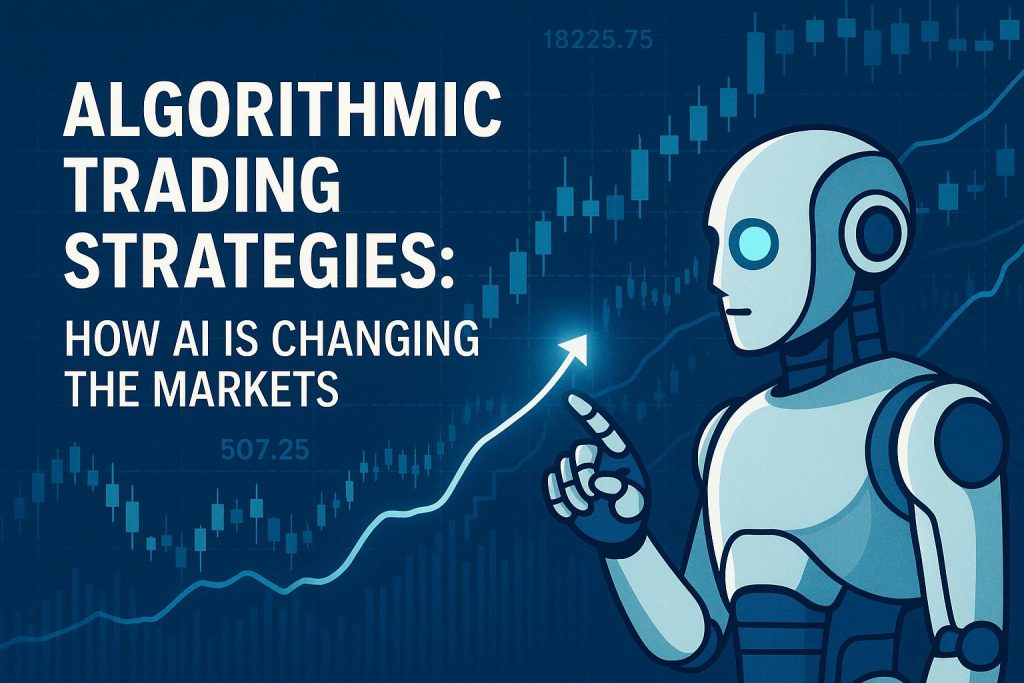
Algorithmic Trading Strategies: How AI is Changing the Markets
Written on October 17, 2025 By admin in Uncategorized
Introduction to Algorithmic Trading and AI
Algorithmic trading represents a significant transformation in the way trading is conducted in financial markets. This field, which involves the use of computer algorithms to automate trading processes, is becoming increasingly popular. Instead of relying solely on traditional manual analysis and the intuition of human traders, the industry is shifting towards technology-driven decisions. The advent of artificial intelligence (AI) in financial markets has been a game-changer, transforming how trades are executed and providing increased efficiency and accuracy for market participants.
The Role of AI in Algorithmic Trading
The inclusion of AI in algorithmic trading introduces a new paradigm. By leveraging machine learning and big data analytics, AI can identify numerous trading opportunities that might not be obvious to the human eye. This cutting-edge technology analyzes an enormous amount of data to make predictions about future price movements. The precision of these algorithms allows trades to be executed at optimal times, potentially maximizing profits and minimizing losses for investors.
Data Analysis and Pattern Recognition
One of the core strengths of AI algorithms is their ability to perform exceptional data analysis. AI systems are designed to process information from a vast array of sources, including news articles, social media platforms, and historical price trends. Through pattern recognition, AI can detect complex correlations and patterns that might be difficult or impossible for human analysts to discern. This capacity to parse extensive and varied data sets provides AI with a formidable advantage in the swiftly changing landscape of trading.
Speed and Efficiency
The hallmark of algorithmic trading powered by AI is its tremendous speed and efficiency. AI systems operate with far greater velocity than any human, processing and analyzing vast amounts of data almost instantaneously. This rapid action translates directly into immediate trade execution. By drastically reducing the time gap between receiving market signals and making trade decisions, traders gain a crucial competitive edge, allowing them to react to market changes well ahead of others relying on manual analysis.
AI-Driven Trading Strategies
AI technologies enable the formation of highly advanced trading strategies. These strategies are built upon machine learning models which are agile and adaptable to shifting market conditions. Among the several AI-driven strategies, some of the most notable include:
Statistical Arbitrage
Statistical arbitrage is a strategy that focuses on identifying and exploiting pricing inefficiencies between two or more correlated assets. AI models can swiftly sift through vast data sets to uncover these discrepancies. Once identified, the models execute trades aimed at benefiting from the anticipated corrections in asset prices, capitalizing on these momentary inefficiencies.
Sentiment Analysis
Through sentiment analysis, AI systems measure market sentiment by evaluating a wide range of textual data. For instance, assessing social media posts, financial news, or analyst reports enables AI to gauge the current mood of the market. This sentiment assessment allows AI tools to tailor and adjust trading strategies in alignment with market moods, thus enhancing decision-making.
Challenges and Considerations
Despite the numerous advantages brought about by the integration of AI in algorithmic trading, there are notable challenges to consider. It is essential for AI models to be meticulously trained, which requires vast quantities of high-quality data. Additionally, financial regulations and ethical standards must be taken into account.
Data Quality
The effectiveness of AI in trading is intrinsically linked to data quality. Reliable predictions and optimal trading decisions rest on access to accurate and relevant data. Poor quality data can lead to errors in prediction and suboptimal trading results. Hence, it is paramount for traders to regularly update and verify their data sources to maintain precision and effectiveness.
Regulatory Compliance
As AI trading strategies are developed and implemented, adherence to regulatory guidelines becomes essential. Regulatory bodies globally are placing an increasing emphasis on monitoring algorithmic trading activities to prevent market manipulation and ensure the integrity of markets. Traders utilizing AI need to ensure transparency in their trading activities and adhere to ethical practices that meet regulatory standards.
Conclusion
The influence of AI is markedly reshaping the domain of algorithmic trading. Its ability to analyze extensive datasets, discern patterns, and execute trades with remarkable efficiency offers alluring opportunities for traders. Nonetheless, successfully implementing AI-driven strategies requires due diligence regarding data quality and rigorous adherence to regulatory compliance. As technology continues to advance at a rapid pace, the role of AI in financial markets is poised to expand further, offering traders worldwide a plethora of new opportunities. For further exploration into algorithmic trading and its relation to AI, consider delving into resources provided by established financial institutions and specialized trading platforms.
This article was last updated on: October 17, 2025